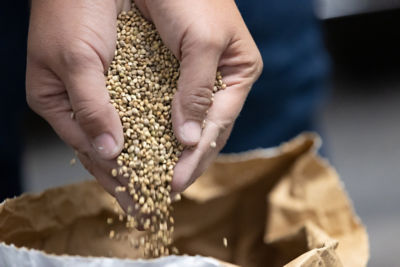Causal Agent
Clavibacter michiganensis subsp. michiganensis
Distribution
Australia, Brazil, China, Israel, South Korea and USA (California, Indiana, Michigan and Ohio)
Symptoms
Symptoms of bacterial canker in pepper include leaf and fruit spots and, less frequently, systemic wilt. In localized infections, symptoms first appear as small blisters or raised white spots on leaves and stems. Later, the centers of the leaf spots become brown and necrotic, and develop a white halo. Stem lesions often develop a crusty appearance and elongate to form cankers. Symptoms on fruit first appear as very small, round, slightly raised spots. These spots gradually increase in size and may develop a brown center and a white halo. When these are numerous, spots merge and take on a crusty appearance. In systemic infections, a gradual wilting occurs followed by plant death.
 Bacterial canker lesions on red fruit.
Bacterial canker lesions on red fruit.
 Lesions may merge and appear crusty.
Lesions may merge and appear crusty.
Conditions for Development
The bacterium enters the plant via wounds and stomata. Clavibacter may be seed-borne and may infest the seed externally or under the seed coat. High relative humidity and daytime temperatures between 25° and 30° C (77° and 86° F) generally favor the disease. Dense plant populations and overhead irrigation also provide an ideal environment to spread the bacterium. Insects, tools and human contact may also aid the spread.
Control
Sow only tested seed and certified transplants. Do not transplant peppers into ground used for tomatoes during the previous season. Clean cultivation equipment before entering a new field, avoid entering fields when foliage is wet, and incorporate plant debris immediately after harvest to help reduce losses. Never harvest fruit from symptomatic plants. Rogue all symptomatic and adjacent plants. Rotate to a non-host for a minimum of three years if the disease is found in a field.




